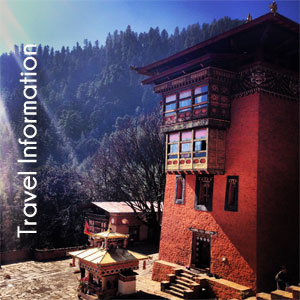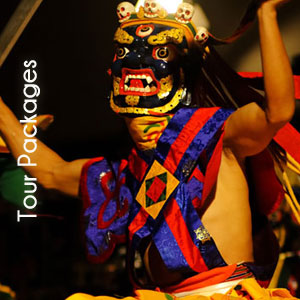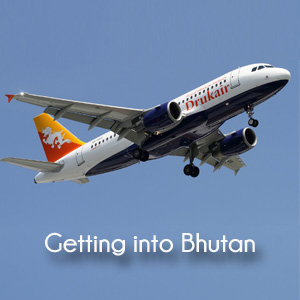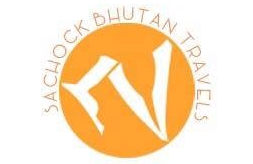Jambay Lhakhang Drup happens to be one of the most popular festivals in the hill nation of Bhutan. It has a significant place in Bhutanese culture and psyche as it is celebrated with a duel purpose and agenda. First, it is a tribute to the honour of Guru Rimpoche, a saint who introduced Tantric form of Buddhism in Bhutan. Secondly, this festival commemorates the establishment of Jambay Lhakhang (temple) in 7 th century.
During this festival, variety of traditional and mask dances are performed and each dance bear significant meaning. However, the highlight of Jambay Lhakhang Drup remains the fire ceremony named ‘Mewang’ and the religious dance known as ‘Tercham’. Apart from these, the other activities include- a famous drum beat dance, a clown dance called Dola Pangtoy Shazam, Raksha Mangcham (a dance symbolizing life after death) and many more. With the proceedings of the events, this festival captures the attention of the onlookers and crate a magnificent spectacle.
Jambay Lhakhang Drup is an annual festival of Bhutan that celebrates two important happenings of the nation- founding of the Jambay Lhakhang and the glory of Guru Rimpoche.
Day 01: Arrive Paro
The flight to Paro is one of the most spectacular of all mountain flights. One can see the Mt. Everest, Mt. Kanchanjunga, Mt. Makalu and other peaks in Bhutan such as Mt. Chomolhari, Mt. Jichu Drakay, and Mt. Tsherimgang. The green wall of hills known as the doors, or gateways into Bhutan from the plains climbs continually higher as you look down the forested mountainsides, and to the north, the great snowcapped peaks of the inner Himalayas rise up to the sky. You will be received by a representative of Bhutan Traveldom-Global Connect (Bhutan tour operator) who will be your tour guide during your entire stay in Bhutan.
Check into hotel and after lunch visit the National Museum, housed in the Ta Dzong (watchtower) which located just above Paro dzong (fortress). Here an intriguing collection of artifacts provide a wonderful introduction to the rich culture and heritage of the Kingdom.
Walk down to Paro Dzong, a fine example of Bhutanese historic architecture. From the Dzong, walk further down to Nyamai Zampa, a traditional cantilever bridge.
In the evening stroll around the Paro town, you may visit local shops.Overnight at hotel in Paro.
Day 02: Paro-Thimphu
After breakfast,drive to Thimphu, the capital town of Bhutan. The road runs down through the Paro valley, to Chuzom (Confluence) at the entrance to the valley, where the Paro and Thimphu rivers meet. The road passes along a narrow valley with high, rocky cliffs on the left, and then the valley opens out into farmland on the approach to Thimphu. Simtokha Dzong, “the place of profound tantric teaching”, stands sentinel on a hillock a few kilometers out of town. This dzong ( fortress) now houses the Institute for Language and Culture Studies.
Check into hotel in Thimphu, after the refreshment, visit the following:
Folk Heritage Museum and National Textile museum
National Institute of Traditional Medicine, where the medicinal herbs abundant in the kingdom are compounded and dispensed.
School of Traditional Painting of Arts and Crafts where children are taught the traditional art of woodcraft and painting.
National Library where a vast collection of ancient manuscripts is preserved.
In the evening, drive to see the Takin Zoo, which houses the national animal the Takin that is only found in Bhutan. Drive further upto Sangaygang to get a bird’s eye view of the Thimphu valley in the evening. Dinner and overnight at hotel in Thimphu.
Day 03: Thimphu Short Hike to Tango Monastery
After breakfast, drive through the upper Thimphu valley to the base camp of Tango Monastery ( 30 minutes drive) and hike up to the Monastery with a picnic lunch. Tango is the center for higher studies for monks. The hike up will take approximately 45 minutes. The Monastery is situated on the hill top.The view from Tango Monastery is breathtaking.Walk down and drive back to Thimphu and evening free to relax / stroll around Thimphu town.
In the evening, visit the government-run Handicrafts Emporium and local crafts shops, to browse through examples of Bhutan’s fine traditional arts. Here you can buy hand-woven textiles, thangkha paintings, masks, ceramics, slate and wood carvings, jewelry, and other interesting items made from local materials.
Overnight at hotel in Thimphu.
Day 04: Thimphu -Punakha
After breakfast, drive to Punakha through Dochula Pass (3,088m/10,130ft). If you have a clear sky, the view of the Himalayan Mountain ranges is spectacular and you can even see the Gasa Dzong as a white dot in the horizon. Visit the beautiful 108 chortens built on the hill by Her Majesty Ashi Dorji Wangmo for the security and well being of His Majesty the King of Bhutan. Drive further on intermittently through the jungle and villages towards Punakha.
Stop over at Metsina village , take a 20-minute walk through the rice fields to the Devine Madman’s Monastery-Chhimi Lhakhang, famously known for its fertility shrine, where one can receive a special fertility blessing.
Drive onto Punakha, the old capital of Bhutan and presently the winter residence of the central monk body. Visit the Punakha Dzong, located on the island of the Pho – Chu (male) river and the Mochu (female) river. Overnight at hotel in Punakha.
Day 05: Punakha – Bumthang
After breakfast, drive to Bumthang via Trongsa and Wangdue districts, visiting Wangdue Dzong on the way.It is situated on a ridge overlooking a river junction. In the 17th century, Wangdue played a critical role in unifying the western, central and southern regions of the country. Lunch will be served enroute (picnic lunch)
Drive on to Trongsa via Pele la pass at an altitude of 3,150 metres, a wonderful opportunity for photographs.This journey will take you intermittently through the stretch of forest and villages. Commanding the Mangde Chu at an altitude of 2,200 metres. Trongsa Dzong is the most impressive dzong in Bhutan. Built in 1644 by the Shabdrung, the dzong is an architectural masterpiece.
Drive onto Bumthang, the religious heartland of the nation, with lush valleys and hilly forests. Bumthang consists of four valleys–Chumey, Choekhor, Tang, and Ura–with altitudes varying from 2,600 to 4,000 meters. Along the way you will stop at a yathra (textile weaving) factory, where the yathra are designed with patterns unique to Bumthang, and you can even watch some of the weavers at their looms. Overnight at hotel in Bumthang Jaker.
After breakfast, visit the following:
Jambay Lhakhang, built in the 7th century by the King Songtsen Goempo of Tibet. In his effort to propagate Buddhism he had a plan to build a total of 108 temples in Tibet and neighboring kingdoms.
Chakhar Lhakhang. Besides the main road, a short distance beyond Jambay Temple is Chakhar (Iron Castle) Lhakhang. Although it is easy to mistake it for a house and drive right by, this is an interesting temple and is worth a short visit. It is one of the 108 monasteries built by him to subdue evil spirits in the Himalayan region.
Kujey Lhakhang (Kujey means, “Body imprint”). The temple to the right is the oldest and was built by Minjur Tempa in 1652. It was built around the cave in which Guru Rimpoche meditated and left his body imprint.
Tamshing Lhakhang. This temple is also known as Tamshing Lhendrup Chholing (Temple of the Good Message).
Jakar Dzong, “castle of the white bird”. According to legend, when the lamas assembled in about 1549 to select a site for a monastery, a big white bird rose suddenly in the air and settled on a spur of a hill. This was interpreted as an important omen, and the hill was chosen as the site for a monastery and for Jakar Dzong. The fortress is now used as an administrative center of the valley and summer residence of Trongsa monks.
In the evening stroll around the beautiful landscape of the Bumthang Jakar valley. After dinner attend the first day of Jambay Lhakhang festival.
The first day of the festival begins in the evening around 8:30 pm. The details of the first day of the festival are as follows:
Black Hat Dance (Shana) and of the Gings (emanations of Guru Rinpoche): Costume: Dancers, wearing long brocade robes and ornate black hats, perform this dance. The dancers’ who represent the Ging wear shorter robes with masks. This dance is performed to purify the ground and to chase away evil influences.
Dance of Offering (Tshogcham): A dancer offers the body of evil spirits to the deities. After the offering is made the audience goes outside the temple where an arch of pine bushes has been erected.
Fire Dance (Mecham): The arch of pine is set on fire. The fire is said to purify the earth of evil spirits. People who pass through the arch have their sins cleansed. A dancer chases away the evil spirits.
Day 07: Bumthang Jambay Lhakhang Festival
After breakfast,you will attend the full second day of the Jambay Lhakhang Drup (festival) which will start around 10:30 am. You will be watching many ritual dances, which are performed in the court yard of Jambay Lhakhang. There are a number of different dances, subdivided into three categories: those that are intended to give moral instruction; those that are designed to drive away evil spirits and those that celebrate the Buddhist faith in its many guises. This is the occasion where the local people, dressed in their finest clothes, come to attend the festival with packed lunches. This occasion also gives opportunity to the local businesses- there will be a number of stalls selling craftwork, jewellery, religious artifacts and thangkas. Overnight hotel in Jakar.
Details of the 2nd Day Jambay Lhakhang Drub ( festival)are as follows:
It follows a ceremony where a small girl representing the daughter of Sindhu Raja blesses the villagers.Dance of Singje Yab Yum (Lord of death and his consort): The Lord of Death and his consort perform this dance to protect the four realms over which he has power.
Dance of Nyulema and Peling Ging Sum (Three kinds of Ging): The Nyulema is an evil spirit represented by a boy in a skeleton mask. The Ging with the sticks catch the Nyulema. The Durdag or the Lords of the Cremation Ground (represented with dancers wearing white skeletal masks) bring forward a box, which represents evil spirits. The Ging with swords liberate the mind of the evil spirit by killing its body of flesh. The Ging with drums dance to celebrate the victory of religion over the evil spirit.
Dance of the Jachung Bochung (Two mythical birds): Dancers wearing masks representing the auspicious birds perform the dance. The play of the Atsara Gapo Pawo Solgyo (Atsara who acts like a Pawo). Though most of the stories and plays were originally with Buddhist sub text they now serve as comedy relief for the crowd. This story is about an Atsara (clown with a red mask) who is mad. The Atsara injures his son, as he did not recognize him. He tries to save his son’s life by impersonating a pawo or medium and tries to perform a religious curative ceremony. Being unsuccessful he has to finally call a doctor and a monk to cure his son.
Day 08: Bumthang Jambay Lhakhang Festival
After breakfast, attend the full day of the 3rd day of Jambay Lhakhang Drub. The program begins at around 10:30am. Below are the details of the day’s program.
Dance of the four stags (Shacham): The King of the Wind was causing much unhappiness and suffering in the world. Ugyen Rinpoche subdued him and then as a sign of victory rode on the stag, which was the mount of the king of the Wind. Later a disciple of Guru Rinpoche, Namkhay Nyinpo found an effigy of the face of the stag which appeared to be a blessing. Thus the dance came into existence.
Dance of Ging Tsoling: The dance is supposed to take place in the paradise of Guru Rinpoche and is performed by incarnations of the Guru. The dance is said to give blessings to those who witness it as well as remove obstacles to the doctrine of the Buddha. People whistle during the dance to chase away evil spirits and the Ging hit people on the head to chase away impurity from the body.
Dramitse Ngacham (Dance of the drums from Dramitse): The creator of this dance was Kuenga Gyeltshen, a learned lama from the 16th Century who lived in Dramitse. He is reputed to have seen the dance in Guru Rinpoche’s paradise performed by attendants of the guru. The dance proclaims the superiority of religion over evil spirits.
Pacham – Dance of the heros: Pema Lingpa (the Treasure-Revealer who discovered many Buddhist treasures) saw thisdance in Guru Rinpoche’s paradise. On his return to earth he recreated this dance. The most important attendants of the Guru perform the dance. They lead the beings who die into the presence of the Guru.
Phole Mole: The nobleman and the lady. This ‘play’ is about two princes who leave their princesses and go to war. An old couple is to take care of the princesses. As soon as the princes leave the clowns try to frolic with the princesses and also corrupt the old women. When the princes return they are shocked by the behaviour of the princesses and the old women, and have their noses cut off as a punishment. Finally a doctor is called and everyone’s nose is restored and the princesses and princes marry.
Day 09:Bumthang – Punakha via Phojikha
After early breakfast, drive to Phobjikha valley. You may visit Gangtey Gompa (monastery) which now houses one of the only Nyingmapa monasteries in Bhutan. The valley is also the winter home to the rare black-necked cranes (Grus Nicorocolis), which migrate, from remote parts of Tibet, China and Siberia during winter to this valley. Lunch at Phobjikha and after lunch drive to Punakha.Overnight at hotel in Punakha.
Day 10:Punakha-Paro
After breakfast, drive through upper Punakha valley passing through farmhouses. Then,walk to Khamsum Yuelley Namgyal Chorten (50 Mins) temple built by the Queen Of Bhutan for peace and stability in this ever-changing world. This temple is situated on the hilltop overlooking the valley below.
After lunch,drive back to Paro.( If time permits and if interested visit Visit Kichu temple,one of the 108 temples built in the 7th century by the Tibetan King Songsten Gampo. The story goes that a giant demon lay across the whole area of Tibet and the Himalayas and was preventing the spread of Buddhism. To overcome her, King Songtsen Gampo decided to build 108 temples, which would be placed on all the points of her body. Of these 108 temples, 12 were built in accordance with precise plans. Thus, it happened that in about the year AD 638 the temple of Jokhang in Lhasa was built over the very heart of the demon.)
Overnight at hotel in Paro.
Day 11:Paro Short Hike to Taktsang Monastery
After breakfast, drive up to the base camp of Taktsang and then hike up to the most famous Monastery in the entire kingdom of Bhutan perched on the edge of a steep cliff, about 900 meters above Paro Valley. The hike to the viewpoint will take about an hour and it will take 2 hours to the monastery. Lunch at the viewpoint. Walk back down.
Drive up the valley to view the ruins of Drukgyel Dzong, 18 km. from Paro town on the north side of the valley. It was from here that the Bhutanese repelled several invading Tibetan armies during the 17th century
Evening, relax or stroll around paro town , free mingle with people.Overnight at hotel in Paro.
Day 12: Depart Paro
After breakfast,your tour guide from Bhutan Traveldom-Global Connect (Bhutan tour operator) will see you off at the Paro International Airport for your onward journey.

Bhutan Travel Info
Bhutan Travel tips, Daily Tourist Tariff, Bhutan Visa Information, Tour payment regarding your tour booking to Bhutan. Click on the link below to know more.
Learn more >>

Tour Packages
Travel to Bhutan with Sachock Bhutan Travels. We, at Sachock offers Cultural tours, Trekking Tours including the World's toughest Trek Snowmen Trek and colorful Festival tours of Bhutan.
Learn more >>

Getting into Bhutan
Travelling to Bhutan can be accessible by Air, to Paro(the only international airport in Bhutan connecting with Indian Cities, Nepal, Bangaldesh, Thailand & Singapore) & Road through Southern border towns of Phuentsholing, Gelephug and Samdrup Jongkhar.
Learn more >>

Sachock Bhutan Travels, P.O Box No: 1304, Karma Khangzang, Thimphu : Bhutan
Phone # (+975) 77177717 / 77210443 : Tele-Fax (+975) 2 333 881
Email: [email protected] / www.SachockBhutanTravels.com
Sachock Bhutan Travels, Copyright © 2025. All Rights Reserved.






